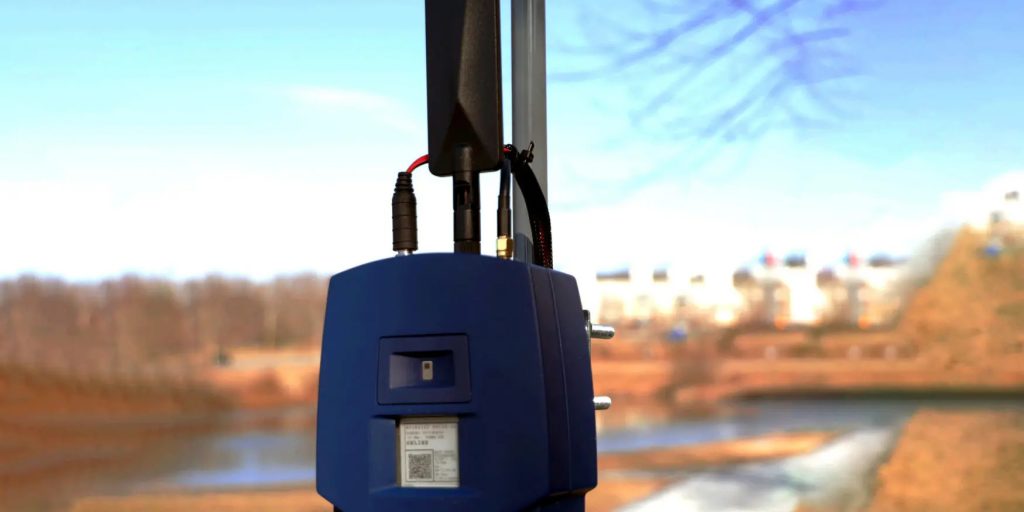Sensor technology can detect wildfire early, alert first responders via AI
Following a climate change-driven trend, this year’s wildfire season is expected to be severe.
The California Department of Forestry and Fire Protection warns that “extended dryness originating from January is expected to continue into the spring with little perception leaving most of the state in moderate to extreme drought conditions prior to summer. These continued dry conditions with above normal temperatures through spring will leave fuel moisture levels lower than normal increasing the potential for wildland fire activity.”
Given the implications of another bad wildfire season, organizations are pushing for solutions to help them be better prepared before ignition. Among technologies that are under development, N5 Sensors has developed a multi-modal sensor system that can detect wildfire before smoke becomes obvious, giving first responders a much-needed edge.
“Most wildfires are still observed by people seeing smoke and calling 911—which can lead to delayed response,” said Abhishek Motayed, founder and CEO of N5 Sensor, which launched in 2012. “In a simple way, you can describe this technology almost like how humans perceive any kind of danger,” in that each system houses three sensors monitoring key environmental aspects— an infrared sensor, another for smoke and particle, and a third tracking gas and chemical changes.
Along with monitoring for wildfire, the sensors can also monitor air quality.
Early detection is imperative in wildfire response, because a fire that was smoldering hours ago “could become a big, raging wildfire,” Motayed said, noting the distance of detection depends entirely on the terrain and other environmental variables. “We’re talking about between 1 to 2 miles distance, and it’s highly dependent on the range, topography, all of that stuff.”
Debra Deininger, N5 Sensor’s chief revenue officer, noted the “sweet spot” is between one-half and one mile. For the best coverage, more sensors are placed in densely populated and ecologically important areas and less in sparsely populated or unimportant areas.
To contact first responders, artificial intelligence in both the sensors and a main hub linked via the cloud can alert any number of stakeholders.
“We’re running some pretty sophisticated edge and cloud analytics,” Deininger said.
The sensors were developed over the last few years through a Small Business Innovation Research award given through the Department of Homeland Security Science and Technology Directorate.
The wildfire sensors were first tested last year in a competitive pilot in California. An explainer from the federal agency notes “chemical sensors are used in a variety of industrial and government applications to protect the safety of humans and infrastructure but the sheer size, power requirements and hefty maintenance costs create limitations.”
As of 2020, the Department of Homeland Security reported it had invested $850 thousand into N5 Sensors’ broader technological development. (This includes wearable and embedded sensors.)
Last year, the Department of Homeland Security field tested the sensors developed by four companies, including N5 Sensors, during a prescribed burn at the Dye Creek Preserve in Red Bluff, Calif. (titled the Wildland Fire Sensor Research Program) in collaboration with the California Department of Forestry and Fire Protection (CAL FIRE) and The Nature Conservancy. N5 Sensors and Breeze Technologies UG of Hamburg, Germany were selected for a second trial, which will be held this summer.
Evaluation criteria included smoke threshold detection levels, time and distance for alert generation from the point of ignition, number of false positive and false negative alerts, cost per unit, dual-use capabilities, and the companies’ ability to continue to enhance their products to quickly bring them to market, according to a statement from the Department of Homeland Security’s Science and Technology Directorate.
The next trial, phase two of the program, will include the deployment of more than 100 sensors in a real-world setting to evaluate the longevity of their performance and to help developers improve algorithms and smooth out any inconsistencies.
It “will focus on hardening the sensors for longer-term field deployments. These sensors will provide early alerting capabilities in high-risk areas where detection and alerting aren’t currently available,” said Jeff Booth, director of the science and technology division’s Sensors and Platforms Technology Center.
Meanwhile, Deininger said N5 Sensors is looking for other locations interested in testing the sensors—following a separate, non-federally sponsored pilot held earlier this year in Gilpin County, Colo.—with the intention to launch the product fully in the latter half of this year.
“There are still additional pilot slots available this summer that we’re working to sign up people for,” Deininger said.




















